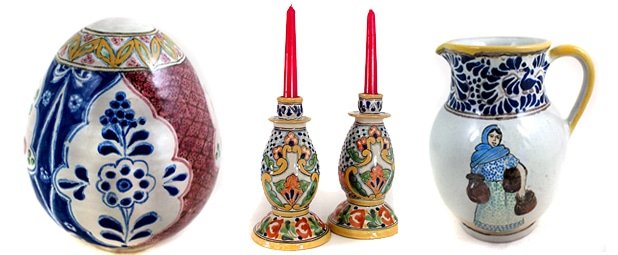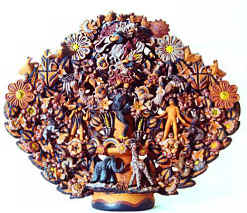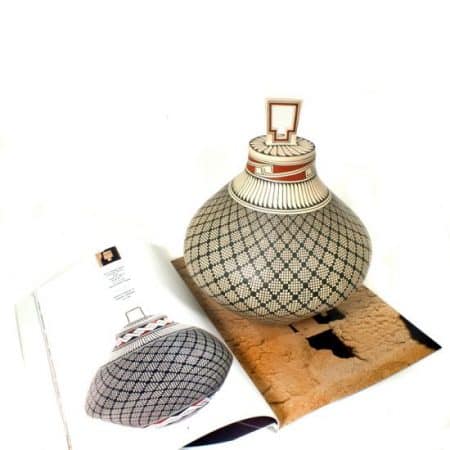When the Spaniards arrived, the blending of societies allowed the indigenous people to learn new techniques, and the combination of styles gave life to some of the more famous ceramic styles of Mexican earthenware, such as the “majolica” or Talavera.

Talavera Pottery
Puebla’s Talavera is a direct descendant of the Arabic-Andalusian tradition, which began in Spain in the ninth century, when the influence of the Arabic culture passed on its techniques to peninsular potters. In Talavera de la Reina , Spain, it became very popular and took a characteristic stylistic form toward the 16th century. It was then that it was brought to the Americas, especially to the Nueva España, the New Spain, as Mexico was called in colonial times.
Although Talavera is only produced in Puebla, other majolica type earthenware is also produced in places like Dolores Hidalgo, Guanajuato and San Miguel de Allende.
To the west, in Tonala, Jalisco, is another Mexican state with a long tradition of ceramic production. Here, there is more of a Persian influence, including pieces such as stew urns, using gold and silver.

In Metepec, State of Mexico, the ceramic tradition has been influenced by Christian beliefs. Here they create the well-known arboles de la vida, trees of life, which are made to look much like tree.
Wire is used to attach the clay leafs and figurines to the “tree”. It is called de la vida because it explains the origins of life. Usually there are figures of God, angles and Adam and Eve, as well as the serpent and some fruit are represented by special figures.
Day of the Dead trees are also made using skeletons, and images related to the festivity.
Some are made in terracotta, without glaze; others are painted in every imaginable color.


